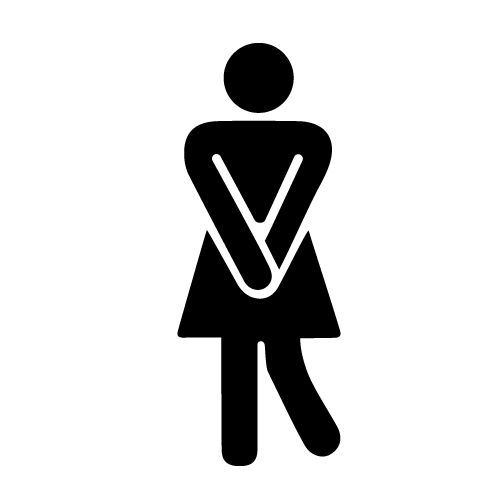Despite affecting millions of women, female urinary incontinence can be battled with specialized treatment.
The loss of bladder control, or urinary incontinence, affects millions of women. It is one of the most common chronic conditions in women in the United States and affects a greater percentage of women than hypertension, depression or diabetes. The symptoms of urinary incontinence can be embarrassing and debilitating. Fortunately, no woman has to suffer with incontinence. Today, depending on the severity of symptoms, treatment options range from lifestyle changes to medications to outpatient surgical techniques. The good news is that most women who seek treatment find a solution that offers them peace of mind and freedom.
Many consider urinary incontinence a natural part of aging—but while it is common, it is not normal or natural and is not limited to older women. In fact, the average age when a woman first experiences symptoms of urinary incontinence is 44.
Approximately 40 percent of women first experience incontinence symptoms before they are 40 years old, and 23 percent have symptoms before age 30.
The two most common types of urine leakage in women are urge and stress incontinence. Urine loss can range from small drops to severe leakage. One in 10 women suffers leakage that may soak through outer clothing.
In women with urge incontinence, there is a sudden, overwhelming need to urinate. They may leak urine on the way to the toilet. Common triggers of urge incontinence include unlocking the door when returning home, going out in the cold, turning on the faucet or washing your hands. Some people with urge incontinence also have to go to the bathroom frequently during the day and/or night. Other individuals have what’s called an “overactive bladder,” and may have a sudden, overwhelming urge to urinate, but may or may not leak urine before getting to the toilet.
Stress incontinence occurs when the muscles and tissues around the urethra do not close properly when there is increased pressure in the abdomen, leading to urine leakage. As an example, coughing, sneezing, laughing or running can cause stress incontinence. Stress incontinence is a common reason for loss of bladder control in women, especially those who have had children.
Successful treatment means addressing the most concerning aspect of the condition for each individual patient. Some patients may be satisfied with just a reduction in the episodes of incontinence, while others may strive for a complete “cure.” Management options range from conservative treatments, such as lifestyle and behavioral therapies, followed by the use of certain medications, all the way to surgery.
Some common-sense lifestyle changes include:
- maintaining adequate intake of fluids during the day, but minimizing fluid intake in the evening to avoid having to get up or suffer bedwetting
- weight reduction
- smoking cessation
Some foods and beverages may contribute to bladder leakage, and avoiding them may improve bladder function and control. These food items include alcoholic, carbonated and caffeinated beverages; citrus juice and fruits; tomatoes and tomato-based products; spicy foods; and artificial sweeteners, chocolate, corn syrup, sugar and honey.
Behavioral changes are recommended as first-line strategies for treatment and include such things as more frequent scheduled urination to keep the bladder less full and the use of pelvic muscle (Kegel) exercises to strengthen the muscular mechanisms that contribute to controlling the flow of urine. The use of drug therapy is the mainstay of the treatment of overactive bladder and urinary incontinence (stress and urge). Most medications are used in conjunction with behavior modification to achieve optimal effectiveness. These medications generally work by giving patients better control and more time to get to a bathroom.
When conservative therapies fail, especially in the case of stress incontinence, surgical procedures may become necessary. Dozens of procedures have been designed to correct stress incontinence. These procedures tend to focus on improving the support of the bladder opening and strengthening the closure mechanisms to reduce urine loss. The good news is that most surgical procedures performed these days are minimally invasive and done on an outpatient basis. A woman may find her incontinence almost entirely cured by one of these simple surgical procedures.
Women living with incontinence or fear of losing bladder control should talk with their doctor. It is estimated that at least 50 percent of women never ask for care and just live with incontinence even though there are many treatment options with high success rates. Talking to an Ob/Gyn or family physician is the first step in getting help. A simple and painless visit to the doctor could be all that is needed to cure an embarrassing but common condition.







